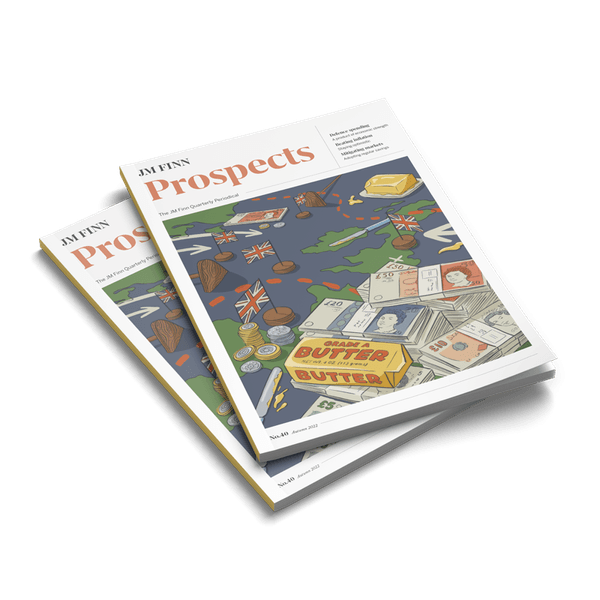Now is one of those periods because almost everywhere you look there would appear to be bad news. As UK investors we saw in early August one measure of inflation – the Consumer Prices Index (CPI) - rise above 10% for the first time since 1980 with the Bank of England predicting it would peak at over 13%.
Not to be outdone the US investment bank Citi raised its estimate for UK inflation to somewhere between 15% and 18% but we will not reach this level until well into next year, and technically both here and in America, the economies are in recession. Technically the UK economy did shrink, but that’s largely on the basis we all pulled back from spending quite so much, and the UK economy relies heavily on consumer spending to grow.
For those of us who can remember back to the 1980s, unemployment peaked at over 10% and interest rates were regularly in double digits. Fast forward 40 years and while inflation is high again, unemployment is less than 4%, house prices in many parts of the country continue to increase and there are very few big name companies going bust.
Stockmarkets in general are like irrational teenagers.
For our closest investment neighbour – the US – the outlook is much the same, if not a little better, with inflation lower and the performance of major companies such as Amazon or Microsoft remaining very good.
So why so much doom and gloom? Two points to remember I always think. A stockmarket is not the same as an economy. A stockmarket is just a collection of companies whose shares are traded on that stock exchange. It is not the economic activity in a country. The second point is stockmarkets in general are like irrational teenagers – they get very caught up in waves of optimism and pessimism where as investors (like parents), we have to step back, remain calm and see the longer term perspective.
When inflation in the US dropped to 8.6% recently the market went up because it was not as bad as expected. Go figure, as the Americans might say.
But what does it mean for us as investors? I would say the same as it always does – if you are invested in a portfolio of good quality companies – or an investment fund like an investment trust or open-ended fund which invests in these types of businesses – you should be fine in the long term.
It’s always a good idea to be sure why and where you are invested, and importantly over what time frame you hope to make a return and what you might need that money for.
It’s very difficult to predict when inflation may drop back permanently.
But will any investment keep pace with inflation if it remains at these levels beyond the next year or so? Realistically the answer is ‘no’ and the danger is investors go chasing yield – in other words they try and find investments which claim to keep pace with inflation.
There are a few areas where there is some inflation protection such as infrastructure or property-based assets because some of them have revenues which rise in line with any increases in inflation.
But there are relatively few of these – an area to look for these in my opinion, are within investment trusts – but a word of caution many of these trusts now have shares which trade at a premium, so in other words the shares are worth more than the value of the underlying investments, because professional investors moved into these areas earlier this year with the first signs of a pick-up in inflation. I would suggest that investment trusts to focus on are those that have consistently raised their dividends every year over at least the last 20 years.
Good companies will remain good companies.
It’s very difficult to predict when inflation may drop back permanently and to what level – my educated guess will be that it starts to fall by the spring of next year and may stay around 4-5% for most of next year. The days of 2% inflation – which is what the Bank of England targets – I would say are gone, for the next five years at least.
But good companies will remain good companies, whatever the level of inflation; the trick is to find them or find an investment manager who is good at finding them, and then stick with them. But be realistic; you are not going to be able to generate a level of annual return that will keep pace with inflation at these levels, so you may need to eat into some of your capital.
But I remain an optimist and on a five year view, I think the UK and US markets will be higher than they are currently, but it won’t be a smooth ride, but then again when is it ever? If all of this doesn’t fill you with comfort or hope, spare a thought for the people of Turkey with its inflation rate running at 79.5% in August!
Lawrence Gosling, is the former editor of What Investment magazine, who has been a financial journalist for nearly 40 years
Illustration by Adam Mallett




